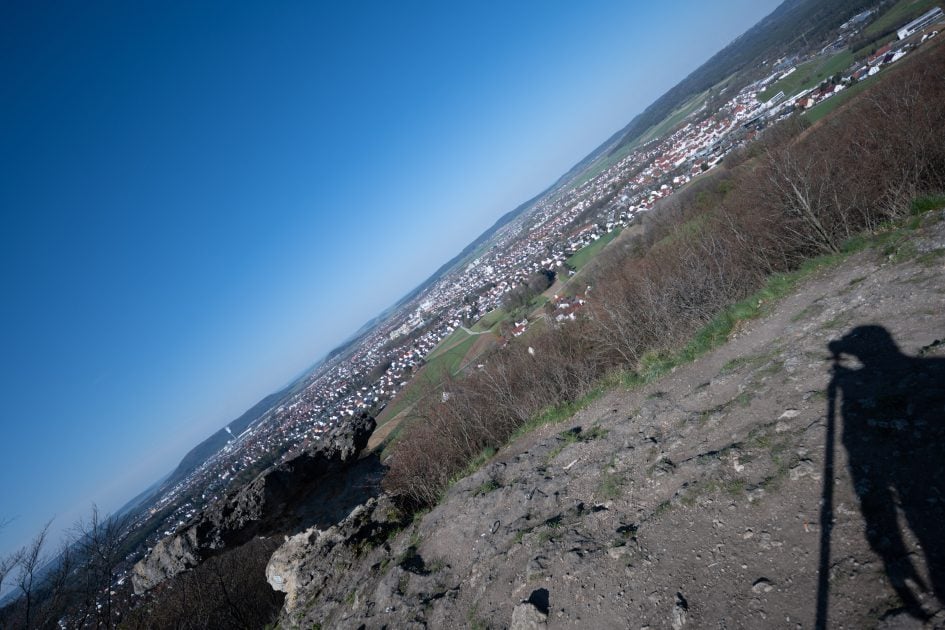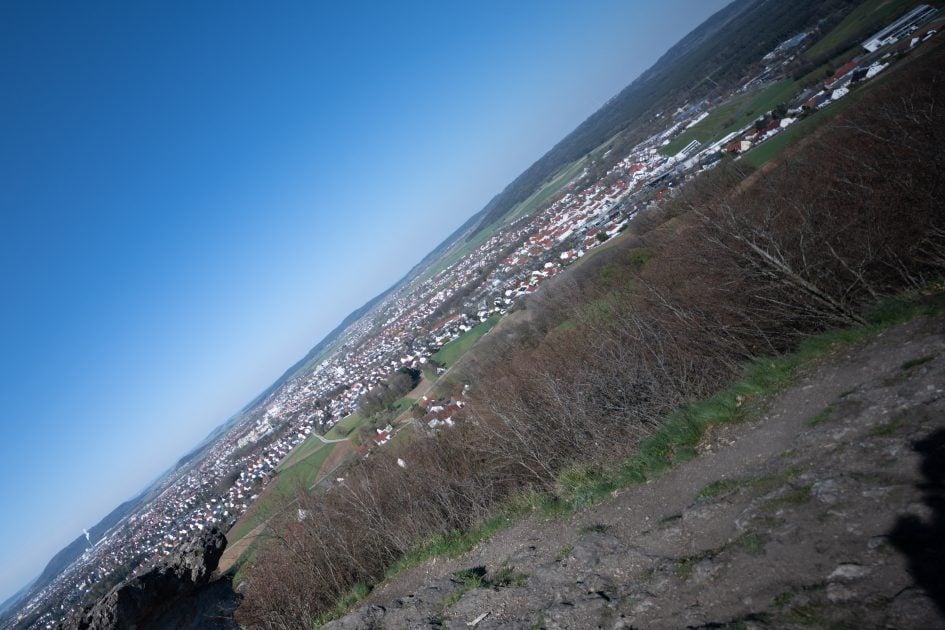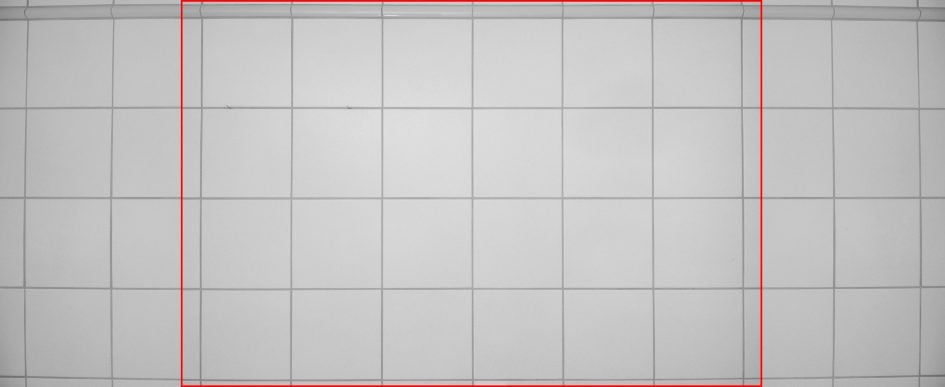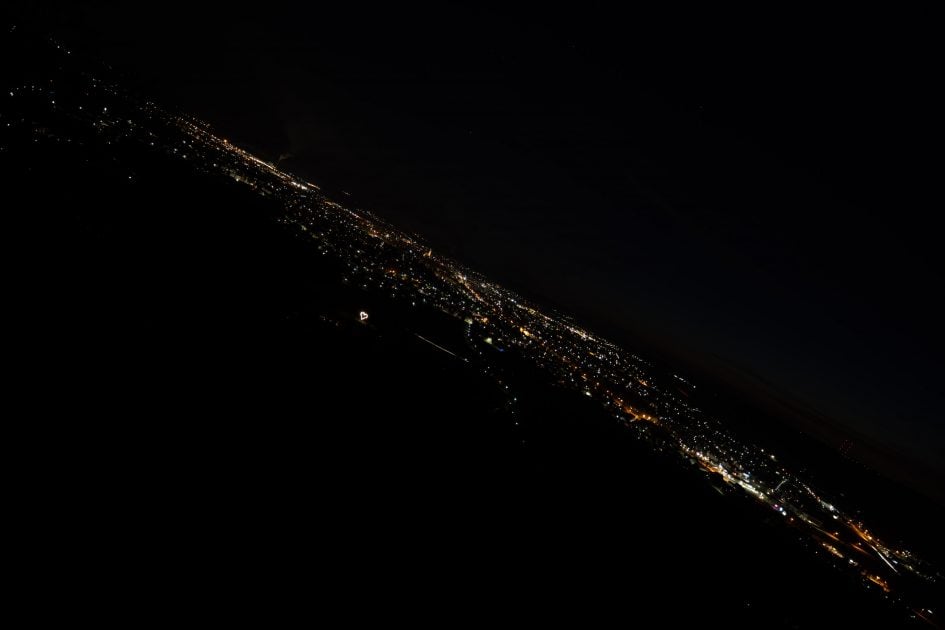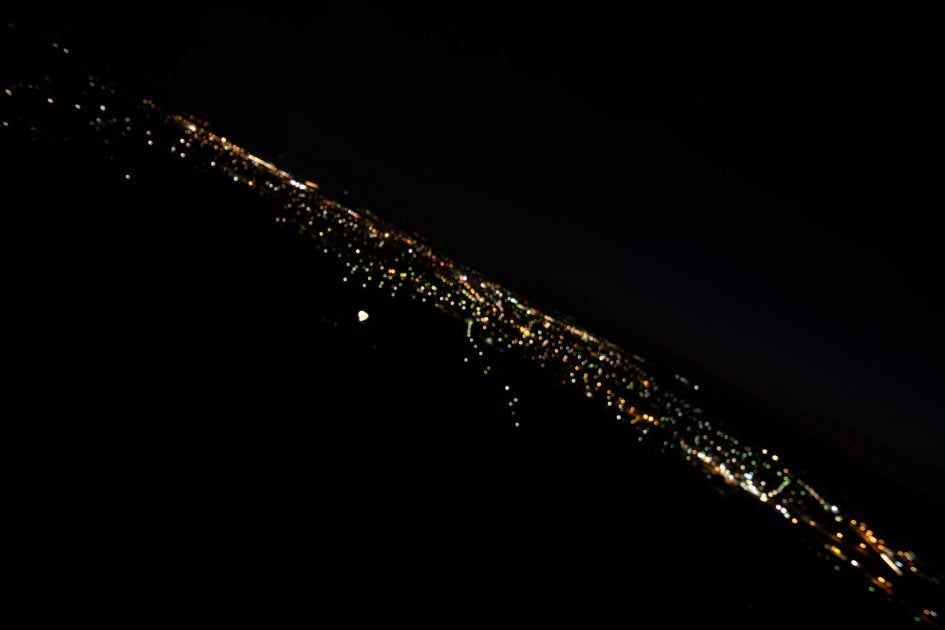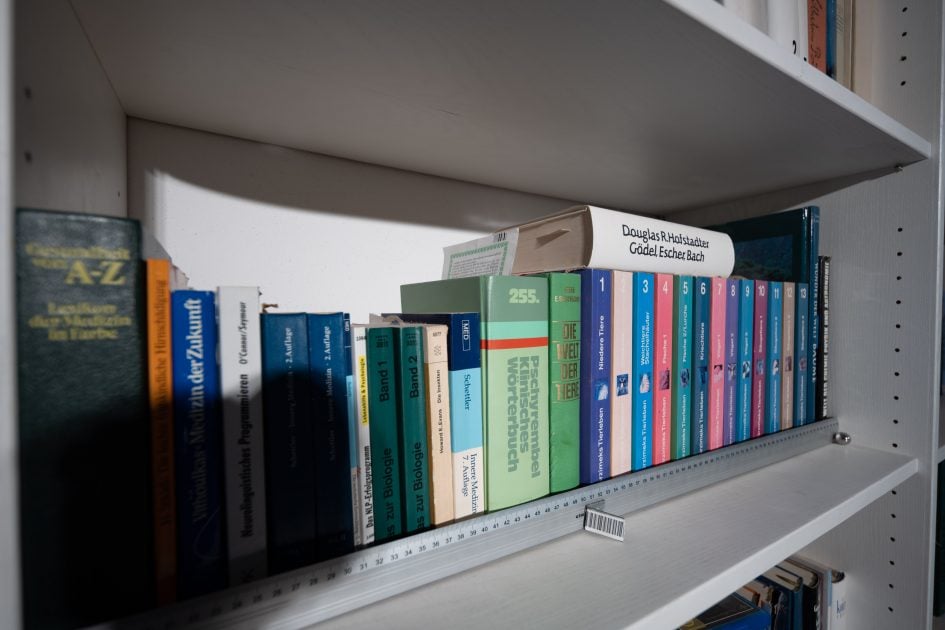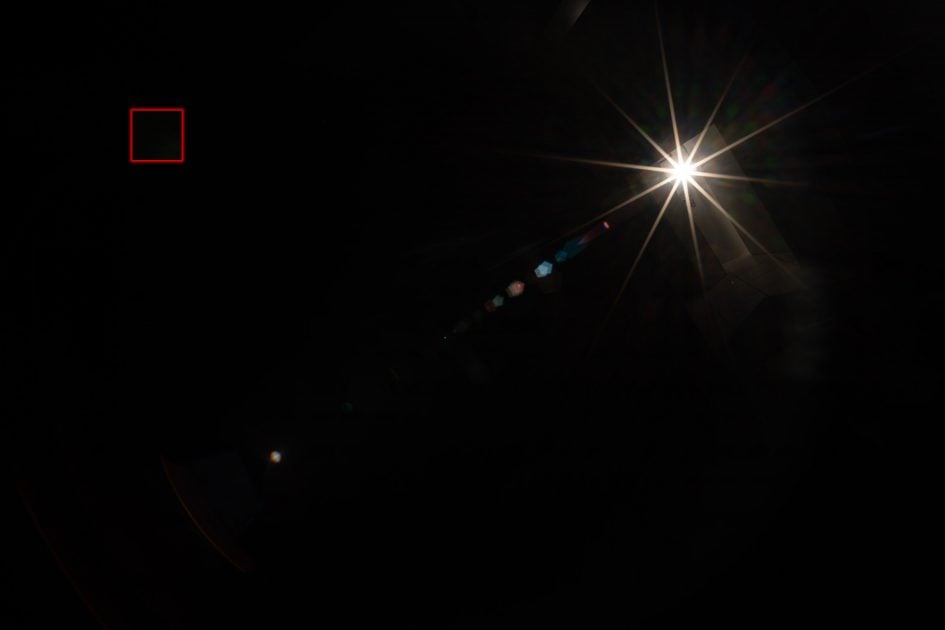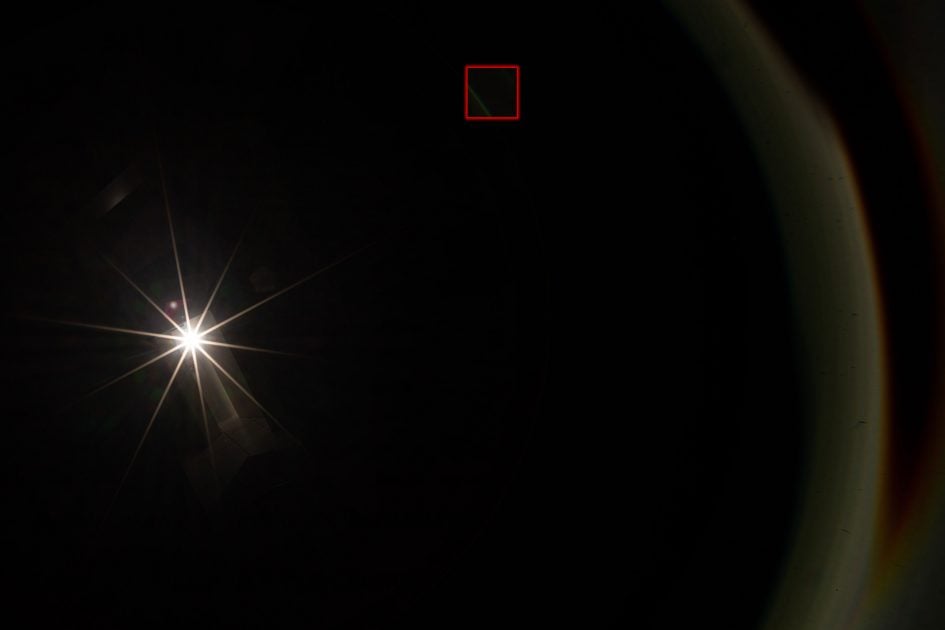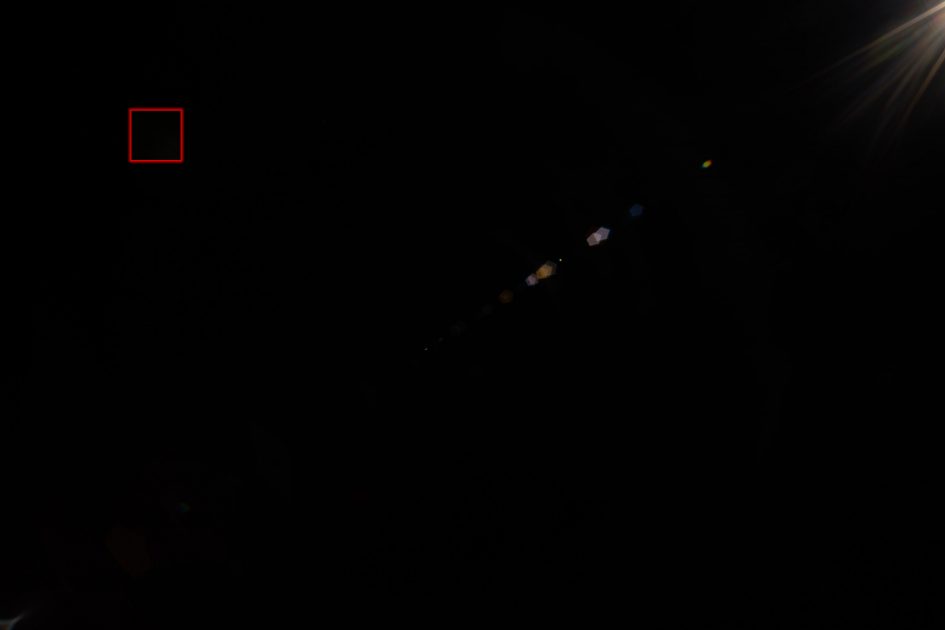Laowa 15mm f4.5 Zero-D Shift review
-
-
Written by Thomas
Quality
Testing: Longitudinal Chromatic Aberration and focus shift
Longitudinal color aberrations (loCA, a.k.a. “axial color” or “bokeh CA”) show up as magenta coloration in the foreground and greenish hues in the background and are not easily corrected in post-processing. The Laowa 15mm f4.5 Zero-D Shift shows very little loCA and no discernible focus shift.
Laowa 15mm f4.5 Zero-D Shift longitudinal Chromatic Aberration (loCA)
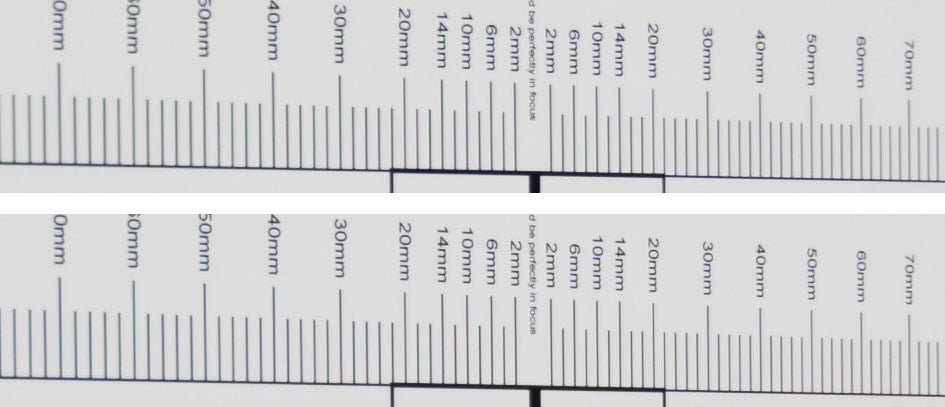
Above: 100% crops from top to bottom: f4.5, f5.6; left = foreground, right = background
The following real life shot shows that the Laowa 15mm f4.5 Zero-D Shift has no color fringing around high-contrast edges in the focus plane although there’s a bit of blooming/haloing:
Above: Laowa 15mm f4.5 Zero-D Shift at f5.6, 100% crop, click image for 4k version
Sharpness and contrast
Let’s have a look at the theoretical performance of the Laowa 15mm f4.5 Zero-D Shift first and compare it to the Nikon Z 14-30mm f4.0 S, Sigma 14-24mm f2.8 DG DN Art, and Sony FE 12-24mm f4.0 G:
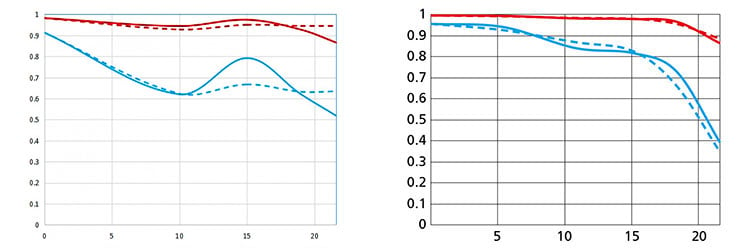
Above: Laowa 15mm f4.5 Zero-D Shift at f4.5 (left), Nikon Z 14-30mm f4.0 S at 14mm, f4.0 (right)
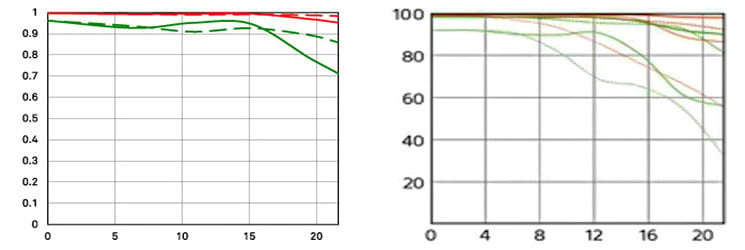
Above: Sigma 14-24mm f2.8 DG DN Art at 14mm, f2.8 (left), Sony FE 12-24mm f4.0 G at 12mm, f4.0 (right)
These MTF charts show the computed lens-performance of lenses wide open without influence of diffraction at 10 line-pairs/mm (red) and 30 lp/mm (blue/green) except for the charts of the Sony where the red lines show the performance at f8.0. Higher values are better (more contrast) and the closer the line-pairs are together the less astigmatism (= resolution depends on the orientation of the test-pattern) the lens has. The x-axis displays the distance from the optical axis (=center of the sensor) in mm. I’ll show you the real-life performance at 4 mm (“center”), 13 mm (“APS-C/DX-corner”), and 20 mm (“FF/FX-corner”) on a on a 45MP Nikon Z7 camera, resp. 42MP Sony A7R II for the Sigma and Sony lenses.
From the charts resolution of the Laowa 15mm f4.5 Zero-D Shift should have a very good overall contrast (red lines). But fine details show a steep drop on the first 10mm of the image circle (blue lines). In that the Laowa trails the other three lenses. The Sigma looks best from the chart – although it is shows here at a more challenging f2.8.
Let’s see how this theoretical performance translates into real life results in the sharpness test based on Siemens-stars. Processing was done in Lightroom 10.2/CRAW 13.2 from RAW to Adobe Color profile with CA compensation applied. Noise-reduction is set to 0, sharpening to 50/0.5/36/10, with no extra tone, color, or saturation adjustment. White-balance was adjusted to a neutral white and I did some exposure compensation to make the brightness of all crops match. So you will not see light fall-off in the corners.
The following 100% crops show the Laowa 15mm f4.5 Zero-D Shift from f4.5 down to f11 compared to the Nikon Z 14-30mm f4.0 S, Sony FE 12-24mm f4.0 G, and Sigma 14-24mm f2.8 DG DN Art at 14mm, f4.0. The Laowa and Nikon were shot on a Nikon Z7, the Sigma and Sony were shot on a Sony A7R II. With linear resolution of the 45MP Z7 sensor only 4% higher than from the 42MP A7R II, identical test set-up, and identical RAW processing, comparability between the test-shots should be very good.
Laowa 15mm f4.5 Zero-D Shift compared; 100% crop from center, APS-C/DX-corner, FF/FX-corner

Above: Laowa 15mm f4.5 Zero-D Shift at f4.5

Above: Nikon Z 14-30mm f4.0 S at 14mm, f4.0

Above: Sony FE 12-24mm f4.0 G on a Sony A7R II at 14mm, f4.0

Above: Sigma 14-24mm f2.8 DG DN Art on a Sony A7R II at 14mm, f4.0

Above: Laowa 15mm f4.5 Zero-D Shift at f5.6

Above: Laowa 15mm f4.5 Zero-D Shift at f8.0

Above: Laowa 15mm f4.5 Zero-D Shift at f11
Performance of Laowa’s 15mm f4.5 Zero-D Shift is pretty soft across the full-frame sensor. Not even at f5.6 does it come near the other three lenses is this comparison. Only at f8 does the lens reach good (albeit not great) levels of sharpness. This corresponds with the steep drop in the MTF chart. See the following example where the 100% crop from the exact center clearly has better resolution than at 4mm image height:

Above: Laowa 15mm f4.5 Zero-D Shift at f4.5, 0mm image height (left), 4mm image height (right)
The test also showed the Laowa to have some field-curvature towards the FF/FX-corner.
I repeated the test with the lens shifted horizontally to the max (11mm). This makes the following “center” crop sit 14mm away from the optical axis, the APS-C/DX-corner crop at 24mm, and the FF/FX-corner crop at 30mm. Loawa claims the image circle to be 65mm in diameter.
Laowa 15mm f4.5 Zero-D Shift shifted; 100% crop from center, APS-C/DX-corner, FF/FX-corner

Above: Laowa 15mm f4.5 Zero-D Shift at f4.5; shifted 11mm

Above: Laowa 15mm f4.5 Zero-D Shift at f5.6; shifted 11mm

Above: Laowa 15mm f4.5 Zero-D Shift at f8.0; shifted 11mm

Above: Laowa 15mm f4.5 Zero-D Shift at f11; shifted 11mm
With the lens shifted 11mm the APS-C/DX-corner now looks better than before especially when stopped down to f5.6. The center looks worse than before because it is now 14mm off-axis which is very close to the APS-C/DX-corner of the unshifted lens. And the FF/FX-corner is pretty mushy with strong astigmatism and is hardly improving when stopped down.
In this test the biggest letdown of the Laowa 15mm f4.5 Zero-D Shift is its soft rendering directly outside the exact center up to the borders of the APS-C/DX image-circle. Farther outside performance comes back to better levels between 15mm and 27mm image height.
Performance at long distances
The Siemens-star test-targets are shot at a distance of 45x focal length (i.e. at around 4m). But performance of lenses also depends on the shooting distance. Therefore I present another series of test-shots of a city around 1 km away. Processing was done in Lightroom 10.2/CRAW 13.2 from RAW to Adobe Color profile manually compensating vignette and CA. Noise-reduction is set to 0, sharpening to 50/0.5/36/10, with no extra tone, color, or saturation adjustment. I used manual focus at the largest aperture and did not change focus for other apertures. All shots were made at base ISO.
The following image shows the complete scene wide open to give you an impression of the angle of view. Following the main image are 100% crops from the center, APS-C/DX-corner, and FF/FX-corner from the Laowa 15mm f4.5 Zero-D Shift compared to the Nikon Z 14-30mm f4.0 S at 14mm f4.0 shot at the same day only minutes apart. The Sony FE 12-24mm f4.0 G and Sigma 14-24mm f2.8 DG DN Art were shot on a Sony A7R II at another day but under comparable atmospheric conditions. As usual I have selected the diagonal that provided the better corner results as almost any lens is a bit decentered.
You can access the large originals but please respect our copyright and only use those images for personal use.
Above: Laowa 15mm f4.5 Zero-D Shift at f4.5
Above: Laowa 15mm f4.5 Zero-D Shift at f4.5; 100% crops, click image for 4k version, here for large original
Above: Nikon Z 14-30mm f4.0 S at 15mm, f4.0; 100% crops, click image for 4k version, here for large original
Above: Sony FE 12-24mm f4.0 G on a Sony A7R II at 14mm, f4.0, click image for 4k version, here for large original

Above: Sigma 14-24mm f2.8 DG DN Art on a Sony A7R II at 14mm, f4.0, click image for 4k version, here for large original

Above: Laowa 15mm f4.5 Zero-D Shift at f5.6

Above: Laowa 15mm f4.5 Zero-D Shift at f8.0

Above: Laowa 15mm f4.5 Zero-D Shift at f11
In this long-distance test the Sigma 14-24mm f2.8 DG DN Art again is the sharpest lens and the Laowa 15mm f4.5 Zero-D Shift the softest. Except for the FF/FX-corner where the Laowa is a bit sharper than the Sony. As the left crop of each row shows the exact center of the image sharpness of the Laowa is relatively good there – albeit still a bit softer than the other lenses. If you look at the large original image linked above you can see again how fast the Laowa softens outside the center. Stopping the Laowa down to f8.0 gives acuity a good boost.
Now for the shifted version. I lifted the brightness of the FF/FX-corner crop quite a bit in postprocessing to make it easier to judge. The large original has no vignette compensation.
Above: Laowa 15mm f4.5 Zero-D Shift at f4.5
Above: Laowa 15mm f4.5 Zero-D Shift at f4.5; 100% crops, click image for 4k version, here for large original

Above: Laowa 15mm f4.5 Zero-D Shift at f5.6

Above: Laowa 15mm f4.5 Zero-D Shift at f8.0

Above: Laowa 15mm f4.5 Zero-D Shift at f11
Most astonishing is the quality of the right crop showing the extreme corner of the Laowa’s impressive image-circle. Even at f4.5 it shows an impressive performance for coming from around 30mm off the optical center. Stop the lens down to f8.0 and you get very usable sharpness across the (shifted) frame.
In this test the Laowa 15mm f4.5 Zero-D Shift (again) suffers from softness directly outside the exact center up to the borders of the APS-C/DX image-circle. But farther outside performance is really quite good once stopped down to f8.0 even right into the extreme corner of the shifted frame.
Vignetting and distortions
To make it easier to see light fall-off in the corners of a full-frame sensor I’ve arranged a series of shots with the Laowa 15mm f4.5 Zero-D Shift at different apertures. All images were developed to the same brightness in the center. The thin lines mark the “normal” frame in the middle with the lens in a neutral position. To the left and right are the outer parts of the frame when the lens is shifted horizontally to the max.
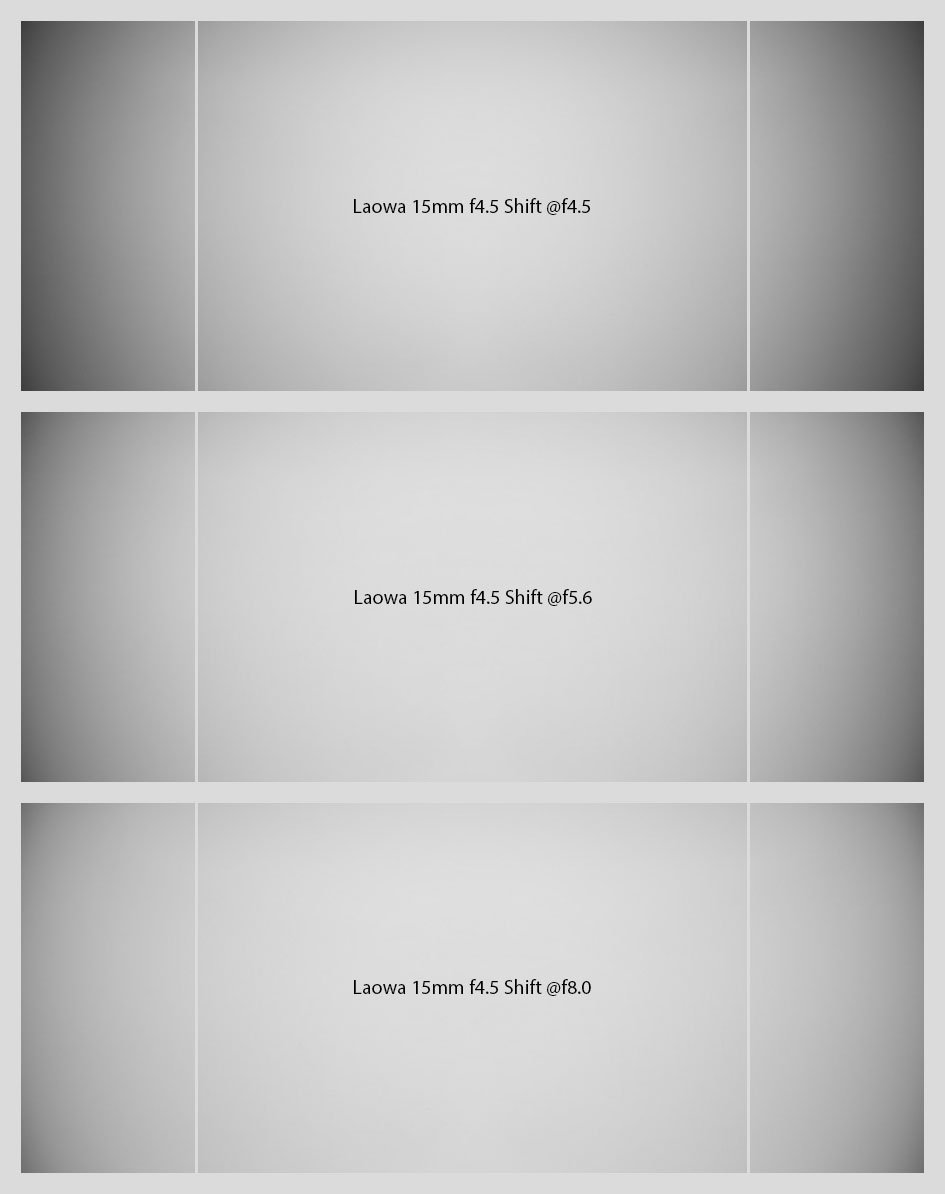
Above from top to bottom: Laowa 15mm f4.5 Zero-D Shift without vignette compensation at f4.5, f5.6, f8.0
The sample images above show that vignetting of the Laowa is pretty strong when the lens is shifted horizontally. Vignetting in stitched panorama shots can be compensated quite well manually using a lens correction of 100/3 for amount/midpoint at f4.5, 100/22 at f5.6, and 75/17 at f8.0:
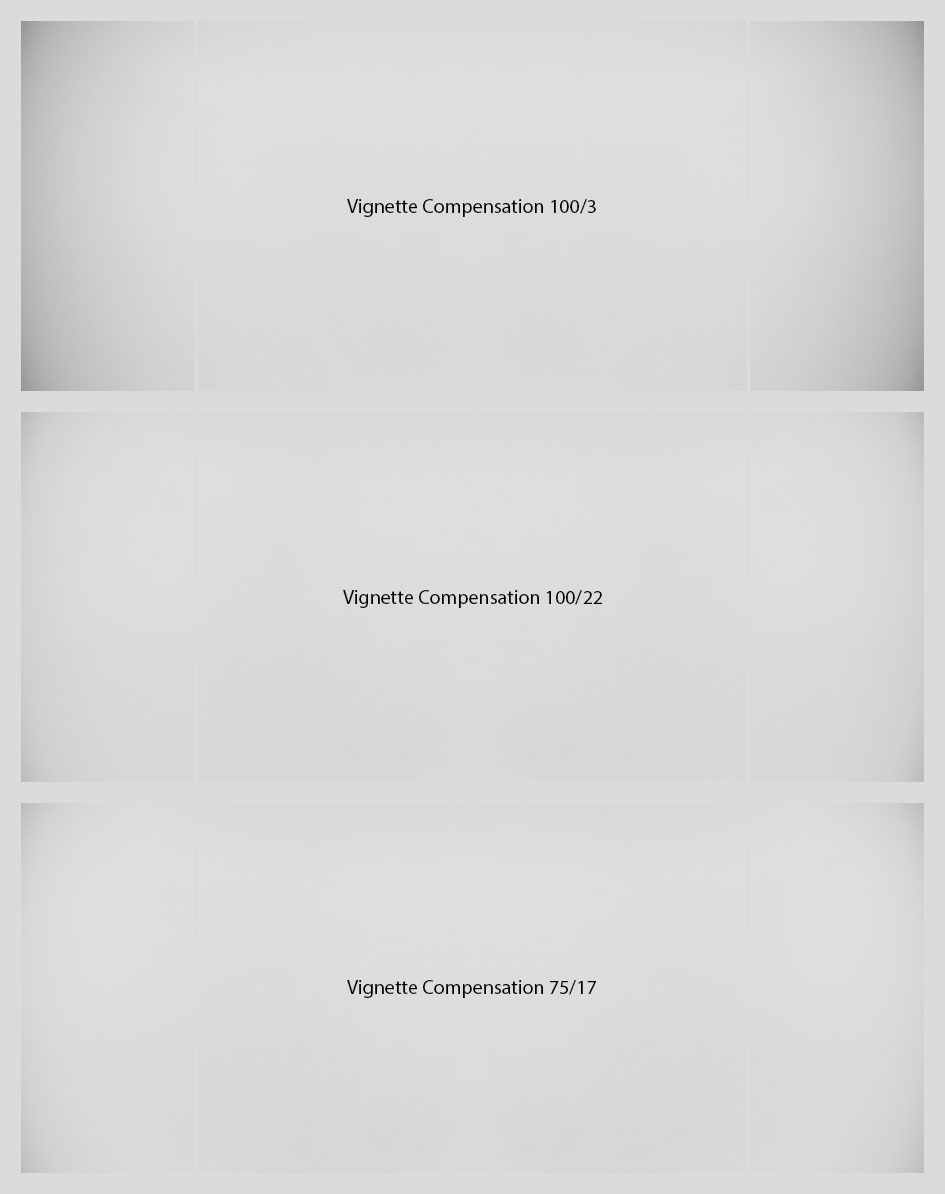
Above from top to bottom: Laowa 15mm f4.5 Zero-D Shift with manual vignette compensation at f4.5, f5.6, f8.0
But if you have only one shot with the lens shifted applying vignette compensation will lead to strange results as the shading is not symmetrical. Better to use a radial filter placed at the optical center of the image. I had to use up to +3.5EV exposure compensation to effectively eliminate vignetting from shifted shots at f4.5.
Distortions are very mild inside the normal frame (red rectangle) but turn to visible barrel distortions outside. This is not easy to correct: dialing in +5 distortion correction in Lightroom reduces the barrel distortion but leaves you with a wavy mustachio. And keep in mind that distortions in a single shifted shot are asymmetrical too.
Distortions: Laowa 15mm f4.5 Zero-D Shift without distortion compensation
Rendering of point-light sources at night-shots
Night-shots pose a different challenge for lenses as the contrast is even higher than under bright sun and point-light sources can reveal some weaknesses such as coma, haloing and colour-aberrations that do not show up as prominently in other test-shots. The 100% crops below the main image show the effect of coma in the FF/FX-corner of the Laowa 15mm f4.5 Zero-D Shift at different apertures with the lens in neutral position (1st row) and shifted 11mm (2nd row):
Above: Laowa 15mm f4.5 Zero-D Shift at f4.5; click image for 4k version, here for large original

Above: Laowa 15mm f4.5 Zero-D Shift; 100% crops from the FF/FX-corner at f4.5 (left), f5.6 (middle), f8.0 (right)

Above: Laowa 15mm f4.5 Zero-D Shift shifted 11mm; 100% crops from the FF/FX-corner at f4.5 (left), f5.6 (middle), f8.0 (right)
The Laowa 15mm f4.5 Zero-D Shift produces only little coma even wide open when the lens is not shifted. It’s a bit stronger in the shifted position but not worrisome.
Bokeh quality
This test is for the rendering of point-light sources in an out-of-focus background. The circle of confusion that is produced by this test is pretty indicative of Bokeh performance (in the background) and light fall-off. Ideally the out-of-focus image of the point-light is evenly lit and perfectly circular, with no “onion-rings”, and without coloration. Large aperture lenses normally produce an effect known as “cat’s eye” the further away from the optical axis the point-light is projected. This is due to optical vignetting in the lens barrel when light enters the lens from an angle.
The crops below the main image are from the center, APS-C/DX-corner, and FF/FX-corner resized to make them comparable across all my reviews.
Above: Laowa 15mm f4.5 Zero-D Shift at f2.8; click image for 4k version
Above: Laowa 15mm f4.5 Zero-D Shift at f4.5; click image for 100% crops
Above: Laowa 15mm f4.5 Zero-D Shift at f5.6; click image for 100% crops
Above: Laowa 15mm f4.5 Zero-D Shift at f8.0; click image for 100% crops
The diameter of the Bokeh balls in the center is determined by the entrance pupil of the lens which in this case is only a little larger than 3mm. So the Laowa produces very small Bokeh balls. Compression of the circle towards the corners is not an issue but there’s bright outlining and once stepped down the form becomes a strange pentagon. The red-ringed version of the lens with its 14 aperture blades should have more well-rounded Bokeh balls – but then it probably produces less impressive sunstars.
Now let’s see how this analysis of out-of-focus point-light sources translates into Bokeh-performance shooting a book-shelf. Crops are from the foreground, middle-ground, and background resized to make them comparable across all my reviews.
Above: Laowa 15mm f4.5 Zero-D Shift at f4.5
Above: Laowa 15mm f4.5 Zero-D Shift at f4.5; click image for 4k version, here for large original
As was to be expected of a 15mm f4.5 lens there is little Bokeh to speak of – even when shooting very close. At least it does not look distracting and seems without double contours. See also the following crop (now at 100%) from the same images showing the ruler.
Above: Laowa 15mm f4.5 Zero-D Shift at f4.5; click image for 4k version, here for large original
Close-up performance
The Laowa 15mm f4.5 Zero-D Shift goes down to 1:4.9 magnification. The following set of images was shot at 1:5 magnification where the area of sharp focus is just 120 x 180mm. The crops shown below are from 0mm, 7mm, and 14mm off the center of the sensor respectively. For the following crops I focused once on the center at f4.5 and did not change focus:

Above: Laowa 15mm f4.5 Zero-D Shift at f4.5; 100% crops

Above: Laowa 15mm f4.5 Zero-D Shift at f8.0; 100% crops

Above: Laowa 15mm f4.5 Zero-D Shift at f11; 100% crops
The Laowa 15mm f4.5 Zero-D Shift produces pretty sharp results in the center even at f4.5. But if you want sharp results in at least half of the APS-C/DX image-circle better stop the lens down to f8 or f11.
Flare, ghosting, and sun-stars
Catching a strong light-source shining directly into the lens is always a risky business – especially with ultra-wide angle lenses: it could produce strange colorful ghost-images or reduce contrast considerably through flare and glare. The appearance of flare and ghosting depends on factors like the aperture and the angle of the light hitting the lens. So to judge the proclivity of Laowa’s 15mm f4.5 Zero-D Shift for these artifacts I went through a series of well calculated shots against a strong light source to provoke glare and ghosting. Remember, there is no lens hood to protect the lens from stray light. Following are three of the more extreme example results. The little bright square inset in the upper left shows the respective area with an exposure compensation of +3 EV to make it easier to see which levels of black the lens renders at that point:
Above: Glare and ghosting. Strong light hitting the Laowa 15mm f4.5 Zero-D Shift at f11; click image for 4k version or here for +3 EV exposure compensation
Above: Glare and ghosting. Strong light hitting the Laowa 15mm f4.5 Zero-D Shift at f11 shifted 11mm horizontally; click image for 4k version or here for +3 EV exposure compensation
Above: Flare and ghosting. Strong light hitting the Laowa 15mm f4.5 Zero-D Shift at f11; click image for 4k version or here for +3 EV exposure compensation
In its neutral position the Laowa 15mm f4.5 Zero-D Shift produces a row of small and relatively unobtrusive ghosts (top image). But they can appear more prominent if the lens is opened wider as the three shots of the church at the bottom of the samples page show. In the shifted position there’s a ghost probably from some internal reflection in the barrel (middle image). And the typical flare occurring when the light is just outside the corner is very weak but followed by some smaller ghosts (bottom image). And in all cases the blacks stay deep black as there is no veiling glare to speak of.
Sun-stars show up at f5.6 already and are well defined even before the lens is stopped down to f11. Just keep in mind that the sun-stars depend on the version of the lens: The blue-ringed version has five aperture blades producing 10-pointed sun-stars which you can see above. The red-ringed version with 14 aperture blades should produce 14-pointed sun-stars if the blades close symmetrically enough. I couldn’t test it, but I’m pretty sure that the red-ringed version has less impressive diffraction spikes.
Next check out my sample images!
Check prices on the Laowa 15mm f4.5 Zero-D Shift at Amazon, B&H, Adorama or WEX UK. Alternatively get yourself a copy of my In Camera book or treat me to a coffee! Thanks!
